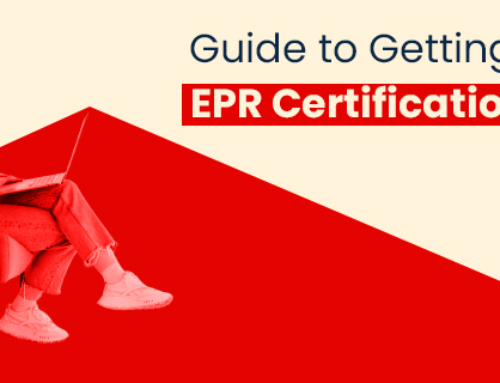INTRODUCTION
Contents
Agriculture in India is that the most vital sector of the Indian economy. this is often thanks to its vast contribution to the nation’s GDP and employment. Around 85% of the land in India is owned by small and medium farmers producing different sorts of food and grains. for many of history, Indian farmers are in dark regarding Farmer Producer Companies. due to the shortage of education, all they spent their time on was sowing the seeds and expecting the harvest to grow in order that they might sell it within the market. They were unaware of the existence of such a company structure including its benefits. Through this text, we aim to inform readers of All About Producer Company.
The Government introduced SFAC (Small Farmers Agribusiness Consortium) and NABARD (National Bank for Agricultural and Rural Development) to unravel the issues of the farmers by organizing them into Producer Organisations (POs). The producer companies themselves also can be a neighborhood of a Producer Organisation. The producer here refers to farmers and every one those agriculturalists producing food products. Forming an organization acknowledged by the market and therefore the government helps the member-farmers to access credit and market linkages. Collective deciding further improves the plight of the farmers.
WHAT IS A PRODUCER ORGANISATION?
A producer organization is an organization formed by the first producers which include farmers, fishermen, weavers, milk producers, craftsmen, etc. APO also can be a cooperative society that makes available the shared profits and benefits to all or any of the member-farmers.
Producer Company maybe a company registered under the businesses Act, 2013, which has the target of production, harvesting, procurement, grading, pooling, handling, marketing, selling, export of primary produce of the Members or import of products or services for his or her benefit. Produce are things that are produced or grown, especially by farming.
OBJECTIVE
The motive of a Producer Company is to make sure that the issues of the first member-farmers are reduced by providing them adequate help and better income. Since, a private farmer doesn’t have enough volume of the product to urge the required benefits of the economy, the organizations tend to make sure a healthy division of revenue and benefits within the organizational members. By combining the profits and therefore the surplus, the first producers can enjoy the advantages of the economy. The unity of all the producers is a robust voice within the market and lets them command a far better bargaining power.
ACTIVITIES CARRIED BY PRODUCER COMPANY
The formation and therefore the regulation of a Producer Company follows the rules mentioned within the provisions of Sections 581A to 581ZL of Companies Act, 1956, read with Companies Act, 2013, and therefore the rules made thereunder. The concept of Producer Company was first introduced in 2002 supported the recommendations of a number one economist, MR. Y.K. Alagh. A producer company must follow the subsequent activities consistent with the businesses Act 2013 (formerly the businesses Act 1956):
FEATURES
- Producer members: The Producer Company may be a group formed by the first producers engaged in farm or non-farm activities.
- Legal: it’s a legal entity and registered body.
- Shareholders: The producer members are the shareholders within the organization.
- Activities: the corporate deals with the business activities associated with the first product.
- Aim: the most motive of Producer Company is to profit the member producers.
- Profit-Sharing: The profit is shared among all the member-farmers.
- Funding: a neighborhood of the excess is added to the funds of the corporate for business expansion.
STRUCTURE
Members/shareholders: during a Producer Company, only a producer or producer institutions can acquire membership. Producer Company may be a membership-based body and it can act only through its members. Thus, a corporation is made by the members, and may even be wound up by them. Members act through their General Body.
Board of Directors: Elected by members and should act collectively only in meetings. Office bearers: Individuals selected to seem after the day-to-day affairs of the corporate, like CEO, accountant, go down keeper, etc. they’re salaried people of the corporate.
FORMATION AND REGISTRATION OF A PRODUCER COMPANY:
Section 581C states that any ten or more individuals, each of them being a producer, or any two or more producer institutions, or a mixture of ten or more individuals and producer institutions can form a producer company.
Section 581A(m) defines a producer institution as a producer company or the other institution having only producer or producers or producer company or producer companies as its members whether incorporated or not having any of the objects mentioned in Section 581B and which agrees to form use of the services of the producer company or producer companies as provided in its articles.
The process of registering a producer company is analogous thereto of a personal Ltd. It includes the subsequent steps.
Obtain digital signature certificate (DSC) and directors number from its directors alongside self-attested copies of documents like contact details, PAN, Aadhaar, etc.
Fill the proposed name in FORM-1A with the registrar of the concerned state along with -side prescribed fees. Once the suggested name has been approved by the registrar, an application of incorporation has got to be filed within the prescribed format.
The entity has got to draft a memorandum of association (MoA) and articles of association (AoA), mentioning the quantity of share capital to be registered and therefore the bye-laws of the corporate.
Other documents like the statutory declaration in FORM-1 declaring compliances of incidental matters, affidavits signed by subscribers, a declaration drafted by knowledgeable in the format of FORM INC – 8, directors consent and details under FORM DIR – 2 and FORM DIR – 8, utility bill and NOC was taken from the owner whose address is to be used because the registered office has got to be filed.
Once the registrar is satisfied with the appliance and therefore the submitted documents, he shall within 30 days of receipt of documents required for registration, register an equivalent, and issue a certificate of incorporation. Thereafter, the corporate can commence its operations.
The promoting individuals or the producer institutions need to be desirous of forming a producer company having its objects elucidated in Section 581B. they’re going to need to suits provisions of Part IXA and provisions of the businesses Act, 1956 in reference to registration.
The liability of the members is going to be limited by the memorandum to the quantity, if any, unpaid on shares held by them. The producer company can also reimburse to its promoters all direct costs related to promotion and registration, including registration, legal fees, the printing of AoA and MoA, and therefore the payment thereof shall be approved by the primary general meeting of the members. Upon registration, a producer company shall become a body corporate as if it’s a personal Ltd. with no ceiling on its members. A producer company, shall not, under any circumstance become or deemed to become a public company.
MEMBERSHIP AND VOTING RIGHTS OF MEMBERS
Section 581D delineates the voting rights of members. It prescribes voting rights consistent with who forms the producer company. just in case where the ownership consists solely of individual members, the voting rights shall be supported by one vote for each member, regardless of his shareholding or patronage of the producer company.
Section 581A(h) defines patronage because the use of services offered by the producer company to its members by participation in its business activities.
In a case where the membership consists of produce institutions only, the voting rights if such producer institutions shall be determined on the idea of their participation within the business of the producer company within the previous year, as could also be determined on basis of their participation within the business of the producer company within the previous, as could also be specified by articles of the corporate.
Notwithstanding the aforementioned, the articles of a producer company may provide for the conditions subject to which a member may still retain his membership, and therefore the manner during which voting rights shall be exercised by the members. Likewise, any producer company may, if so authorized by its articles, restrict the voting rights to active members, in any special or general meeting. Any member who acquires any business interest which is in conflict with the business of the producer company shall cease to be a member and be removed therefrom.





